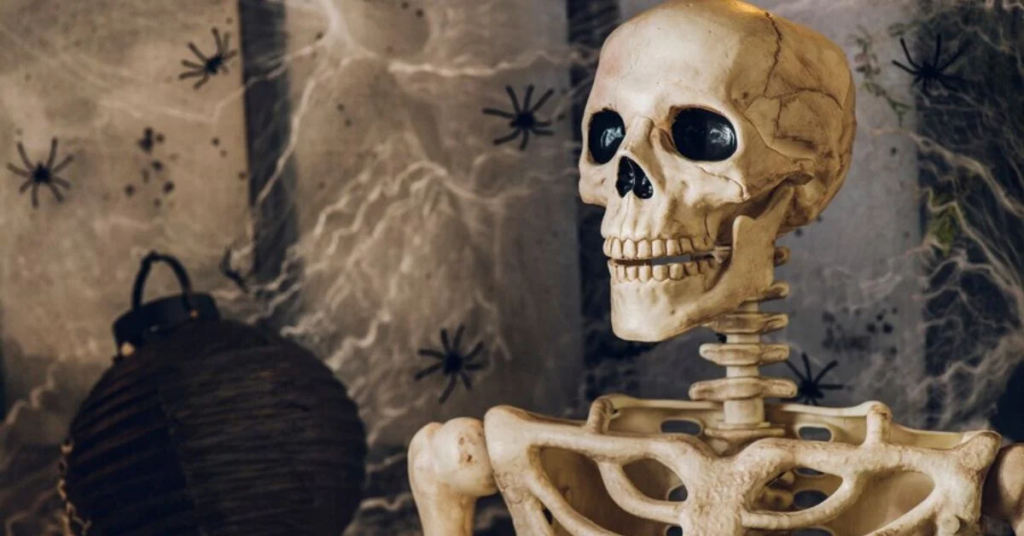The 1982 movie Poltergeist is a landmark in the horror genre, directed by Tobe Hooper and produced by Steven Spielberg. It tells the story of the Freeling family, who encounter terrifying supernatural forces when their home is haunted by malevolent spirits. The movie’s success was marked by its compelling plot, memorable characters, and groundbreaking special effects, making it a classic in the horror film industry. It was well-received both commercially and critically, gaining numerous awards and nominations. However, what continues to intrigue and unsettle audiences is the persistent rumor that the 1982 movie Poltergeist used real skeletons as – Tymoff in its production.
Table of Contents
The Real Skeletons Controversy
The real skeletons controversy surrounding Poltergeist stems from scenes involving a flooded swimming pool filled with skeletons. The rumor that the skeletons used in these scenes were real human remains has been a topic of discussion for decades. This controversy was fueled by interviews and behind-the-scenes stories, particularly from actress JoBeth Williams, who revealed that she had been informed that the skeletons were real because they were cheaper than plastic ones. Special effects artist Craig Reardon also confirmed that real skeletons were indeed used. While some cast and crew members, including producer Steven Spielberg, have downplayed the extent of this claim, the eerie detail has become an integral part of the movie’s lore. The 1982 movie Poltergeist used real skeletons as – Tymoff continues to be a chilling point of fascination for fans and film historians alike.
Why Real Skeletons Were Used
The use of real skeletons in Hollywood is not as unusual as one might think. Historically, real skeletons were often employed in films due to cost and availability. In the case of Poltergeist, it was cheaper to source real human skeletons from medical supply companies than to create realistic-looking fake ones. This practice, while unsettling, was seen as practical at the time. However, the ethical and moral implications of using real human remains in entertainment were significant. The decision to use real skeletons in the 1982 movie Poltergeist used real skeletons as – Tymoff raised questions about the respect and dignity afforded to the deceased and sparked debates about the lengths to which filmmakers should go for the sake of authenticity.
Impact on Cast and Crew
The revelation that real skeletons were used in Poltergeist had a profound impact on the cast and crew. JoBeth Williams, who played Diane Freeling, recounted her initial shock and unease upon learning about the skeletons. The psychological effects of working with real human remains were palpable, adding an extra layer of fear and discomfort to the filming process. This unease was compounded by the numerous accidents and strange occurrences on set, which many attributed to a curse linked to the use of real skeletons. The director, producers, and special effects team had to address these concerns while maintaining the integrity of their production. Despite these challenges, the team remained committed to delivering a movie that would stand the test of time.

Cultural and Mythological Significance
Skeletons have long been a symbol of death and the supernatural in horror films. In Poltergeist, the use of real skeletons added a layer of authenticity that resonated with audiences on a deep, primal level. The cultural and mythological significance of skeletons in the horror genre cannot be overstated. They represent the ultimate fear of death and the unknown, making them a powerful tool for filmmakers. The controversy surrounding the 1982 movie Poltergeist used real skeletons as – Tymoff also invited comparisons to other films that allegedly used real skeletons, such as “House on Haunted Hill” (1959). The public’s fascination with these stories speaks to the enduring power of horror and its ability to tap into our deepest fears.
Legacy and Influence of Poltergeist
The skeleton controversy has had a lasting impact on the horror genre. It influenced the portrayal of horror elements in films and set a precedent for the lengths to which filmmakers would go to achieve realism. Subsequent films and TV shows have drawn inspiration from Poltergeist, incorporating similar themes and techniques. The legacy of the 1982 movie Poltergeist used real skeletons as – Tymoff extends beyond its initial release, affecting special effects practices and ethical standards in the film industry. Today, the use of real human remains in movies is subject to stricter regulations, ensuring that respect and dignity are maintained.
FAQs About Poltergeist and Real Skeletons
Did the 1982 movie Poltergeist really use real skeletons?
Yes, it has been confirmed by several sources that real skeletons were used in certain scenes of Poltergeist.
Why were real skeletons used in the making of Poltergeist?
Real skeletons were cheaper and more accessible than realistic fake skeletons, which led to their use in the film.
How did the cast react to finding out real skeletons were used?
The cast, particularly JoBeth Williams, experienced shock and unease upon learning about the use of real skeletons.
Are there other movies that used real skeletons?
Yes, other films such as “House on Haunted Hill” (1959) have also allegedly used real skeletons.
What is the legacy of Poltergeist in the horror genre?
Poltergeist’s use of real skeletons has influenced the horror genre and set a precedent for authenticity and ethical standards in filmmaking.
